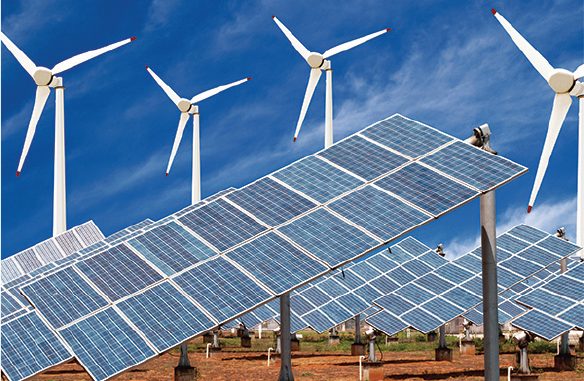Empowering Communities: Unveiling the Potential of Community Solar Projects

Community solar offers participants significant cost savings on electricity bills – NREL estimates up to 10%. It is also accessible to renters, low-income households, and those with shaded rooftops.
Communities are empowered when they can access energy solutions that meet their needs. Getting involved early with community-based partnerships is vital to designing programs that maximize benefits for all residents.
1. Powering a Sustainable Future
Community solar projects enable individuals to participate in renewable energy production and reap its benefits without requiring them to install rooftop panels. It is essential for low-income households, who spend up to 3.5 times more on electricity bills than other households and often cannot afford the upfront investment of rooftop solar.
Developers should consider solar irradiance, available space, and proximity to existing grid infrastructure when designing community solar projects to maximize project efficiency and profitability. Additionally, communities should be prioritized as locations for these projects.
Projects should also prioritize community engagement and communication. Engaging with local stakeholders, nonprofits, houses of worship or faith-based organizations, schools, tenant associations, and social service providers can help generate interest in and support community solar initiatives. Involving subscribers in the design of their projects by offering subscriptions at market-rate or income-based rates and incorporating their feedback into project design is another way to demonstrate community ownership and engagement.
2. Boosting Economic Growth
The financial benefits of community solar projects are clear: participants save money on their energy bills, and investors receive a predictable return. In addition, community solar can help communities become energy-independent, reducing their dependency on significant power plants and making them less vulnerable to outages.
The economic development of community solar can be enhanced by ensuring critical consumer protections. Subscription contracts should not require upfront costs and should not involve credit checks or scores for participation. Furthermore, programs that serve LMI households should prioritize right-sizing their subscription sizes to maximize electricity savings for the program’s participants.
Additionally, projects should aim to use unionized labor for project development. It can increase employment opportunities, particularly for women and minorities, while providing family-sustaining wages. Lastly, projects can utilize federal tax credits like the production tax credit to reduce project costs and accelerate deployment. It will encourage private investment in these projects and reduce the payback period, allowing subscribers to see an even faster return on their investments.
3. Reducing Carbon Emissions
Community solar projects can help reduce carbon pollution, especially in low-income communities that disproportionately burden the health issues associated with fossil fuels. Moving away from carbon-intensive industries like coal, oil, and gas to cleaner renewables is one of the most potent pathways toward environmental justice.
Community-based clean energy can also create resilient cities by helping reduce energy transmission costs and keeping the power grid stable during peak demand. It is essential for communities with limited access to rooftop solar, a significant portion of the US population.
Getting a project off the ground can be technically challenging and financially daunting. However, funding options like grants and subsidies can bring down costs. Likewise, advocacy can move the needle on policies that block community solar projects. And finally, innovative design and technological advances can make these projects more feasible.
Community solar projects that prioritize community buy-in through authentic opportunities for engagement, a commitment to income-based subscription rates and equitable job training, and leveraging the local economy with community benefit agreements can strengthen their long-term impact.
4. Creating Jobs
The construction phase of community solar projects creates jobs, which feed back into the local economy. Plus, because these farms are located in communities, they can help reduce pollution and increase energy security.
Residential clean energy projects are often associated with affluent customers, but community solar allows low- and moderate-income households to participate in renewable power generation. And since the electricity generated by these projects is credited to subscribers’ electric bills, it can significantly impact their bills.
In addition, many community solar programs offer financial support to enable more people to sign up for a project and stay in the program. They may do this by offering lower subscription rates, using payment plans that allow for missed payments, or providing other incentives like educational workshops and bill analysis.
Equitable access and representation in the solar workforce are essential to the industry’s continued growth and ability to achieve its goals. Community solar developers can do their part by prioritizing equitable outcomes in the design of their projects. It includes leveraging community engagement strategies prioritizing education and engagement on clean energy systems and benefits and fair workforce development programs.
5. Increasing Community Cohesiveness
Communities benefit from shifting away from polluting fossil fuels and toward renewable energy, which is also more sustainable for the grid. Additionally, community solar reduces carbon emissions, which positively impacts the climate.
People can subscribe to a community solar project by purchasing solar farm panels or a share of the solar array’s power. This energy is delivered through the utility grid, and residents’ electricity bills reflect the solar credit on their bills.
Educating communities about community solar and its benefits can drive participation. Outreach activities can be conducted in spaces or meetings where community members gather, such as schools, houses of worship or faith-based organizations, local elected officials’ offices, and neighborhood associations. In addition, some projects prioritize educating subscribers about their community solar options.
Final Words
For example, some offer educational events and informational materials in their local languages; others include opportunities for subscriber feedback and involvement in project design. It is a crucial step to ensure everyone’s voice is heard in decision-making.



